These days the typical black admission is young, in his twenties, loud, paranoid, resisting strongly — you need to get him sedated to restrain him, and the doctors don't know what's going on — he's usually brought in by the police, therefore the doctor hasn't got a clue as to his history — and as with men generally they would be more aggressive, you would be more frightened of them and you would put them on more medication.
National Health Doctor, 2002
In 1858 the Empress of the British Empire, Queen Victoria, came to Leeds to open the newly constructed town hall. Boasting Corinthian columns, and guarded by large stone lions, Leeds Town Hall was one of the largest civic buildings in Europe. The words around the vestibule — 'Europe — Asia — Africa — America' — reminded the people of Leeds that, only one year after the Indian Mutiny had been put down, the globe remained Britain's true sphere of influence. Leeds was perfectly positioned to take advantage of this fortuitous fact. Clothing was no longer the town's main business, and Leeds was becoming better known as the 'workshop of the world'. Hundreds of factories produced bicycles, cranes, nails, sewing machines, bolts, train rails, locomotives, axles, bricks, and much more. There were scores of furnaces burning every day, and the sky was choked with chimneys and pollution. Glassworks and tanneries, skinworks and breweries, every type of industry was represented. Leeds was a hive of productivity and entirely dependent upon the labour of the poor and the young.
Thousands of little children, both male and female, but principally female, from seven to fourteen years of age, are daily compelled to labour from six o'clock in the morning to seven in the evening, with only — Britons, blush while you read it! — with only thirty minutes allowed for eating and recreation. Poor infants! Ye are indeed sacrificed at the shrine of avarice, without even the solace of the negro slave; ye are no more than he is, free agents; ye are compelled to work as long as the necessity of your needy parents may require, or the cold-blooded avarice of your worse than barbarian masters may demand! Ye live in the boasted land of freedom, and feel and mourn that ye are slaves, and slaves without the only comfort which the negro has. He knows it is his sordid, mercenary master's interest that he should live, be strong and healthy. Not so with you. Ye are doomed to labour from morning to night for one who cares not how soon your weak and tender frames are stretched to breaking! You are not mercifully valued at so much per head; this would assure you at least (even with the worst and most cruel masters) of the mercy shown to their own labouring beasts. No, no! your soft and delicate limbs are tired and fagged, and jaded, at only so much per week, and when your joints can act no longer, your emaciated frames are instantly supplied with other victims, who in this boasted land of liberty are hired — not sold — as slaves and daily forced to hear that they are free.
Richard Oastler, Letter to Leeds Mercury , 29 September, 1830
During the nineteenth century, cloth continued to occupy a special place in the Leeds economy, and with the onset of Jewish immigration it achieved something of a revival. The first Jew arrived in Leeds in the 1820s and was listed as a voter in 1832. By the late 1840s a small community of middle-class German Jews had established themselves in Leeds, but the Jewry that followed in their wake was largely comprised of poor Jews from Eastern Europe, often Polish or Russian in origin, who were fleeing pogroms, particularly those that followed the murder of Tsar Alexander II. They would arrive at Hull and make their way west to Leeds in the hope of finding some kind of occupation in the clothing industry, for many were skilled tailors. As their numbers increased they settled in their own ghetto near North Street in conditions familiar to most workingclass residents of Leeds. But this was now their city — their new home — and they had no intention of going anywhere else, despite the well-displayed signs that let them know that Jews were not welcome. By the end of the nineteenth century, the vast majority of the 8,000 Jews in Leeds were employed in one of the 98 Jewish tailoring sweatshops where the conditions were often indescribable.
The thousands of Irish immigrants to Leeds, who arrived in the wake of the great famine of the 1840s, lived in conditions at least as intolerable as those of the Jews. They congregated in the east end of Leeds in slums of unimaginable depravity where crime and prostitution were rife, and these Irish Catholics often embarrassed their English co-religionists with their supposed debauchery. However, what was beyond dispute was the fact that conditions for the poor in Leeds were among the worst in Britain. The water supply was putrid and contaminated with effluence from the sewers, and hundreds of people were often forced to share one privy. Disease was rife, and these overcrowded places were devoid of either daylight or fresh air. Understandably, life on the street was, for some, a much more palatable option. With the introduction of horsedrawn, and then electric, tramways, by the end of the nineteenth century some workers were able to move out of the centre of Leeds and they began to commute to work from the suburbs. However, the vast majority of the poor were trapped in squalor and therefore unable to enjoy civic improvements in education, transport, and the opening up of public spaces for parkland.
At the end of the nineteenth century, Leeds formally became a city and it boasted a population of nearly half a million. However, despite the city's affluence, problems of pollution and overcrowding continued to blight the lives of the working population. Fears of contagious diseases such as tuberculosis were real, as were Jewish concerns about anti-Semitism. Despite the fact that over 2,000 Jews volunteered for service during the First World War, Jews continued to be regarded as 'foreigners'. In 1917 fighting between Christian and Jewish men in the city escalated into a full-scale riot which resulted in many Jewish properties in the Leylands area being destroyed. The city's resistance to perceived 'outsiders', no matter how long they have been resident in the city, has always bedevilled Leeds. This antipathy easily crossed over into the twentieth century, and its virulence was fuelled by the well-known capacity of the people of Leeds for drinking and gambling.
The economic depression of the early twentieth century meant that there was no shortage of people to fill the poorhouses and workhouses of the city. Although new council-owned houses were being built to house the working classes, those who lived below a certain economic level had little choice but to live in slums that remained mired in a depravity reminiscent of the early Victorian years. During the great depression of the twenties and thirties it was once again the clothing industry that saved Leeds. Firms such as Burtons, Hepworths, John Collier, and Jackson's began to corner not only the national, but the international market in ready-made 'smart' clothes. Employment opportunities began to grow, and eventually slums began to be cleared. By the Second World War, Leeds was becoming surprisingly progressive in her civic attitude towards ongoing difficulties in housing and education, but the city's often hostile attitude towards 'outsiders' continued to be a deeper and more impenetrable problem.
In 1933 the Leeds Jewish Refugee Committee began to help German Jews escape from the brutal anti-Semitism of their own country, and by 1939 some 700 German Jews had found refuge in Leeds. However, upon arrival they soon discovered that local golf clubs banned Jews, and that the tea rooms and dance halls openly advertised their 'English only' policy. Jews were treated as pariahs and often subjected to physical attack, or swastikas being painted on their shop windows. But this was now their home; modern Leeds. A city of half a million people with one of the most robust economies in Britain; a city made up of migrants who had all come to settle on the banks of the River Aire. Like the Irish before them, the Jewish population of Leeds refused to move on. They were going nowhere. This was their home. And then others arrived.
Читать дальше
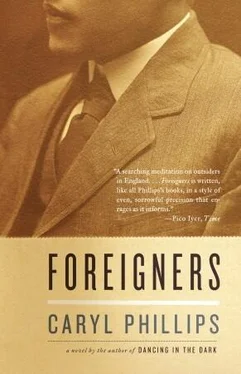


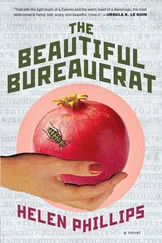
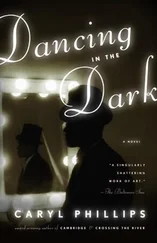

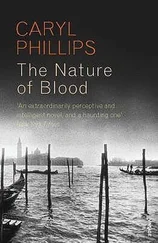
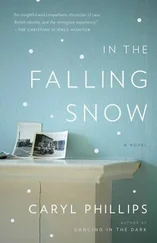

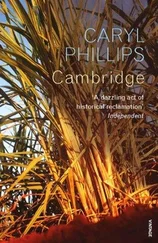

![Unknown - [Carly Phillips] The Bachelor (The Chandler Brothe(Bookos.org) (1)](/books/174132/unknown-carly-phillips-the-bachelor-the-chandle-thumb.webp)
